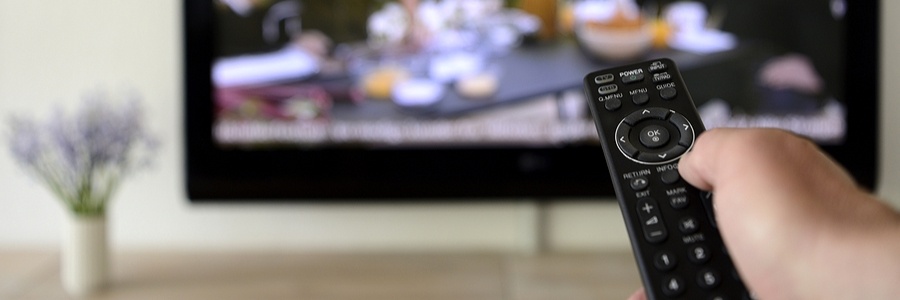
Here's your Friday roundup of 3 items from the MFour blog to keep you up to speed on mobile research as you head into this pre-Thanksgiving weekend:
And here's a Friday tune to send you into your weekend rocking out thankfully.

Here's your Friday roundup of 3 items from the MFour blog to keep you up to speed on mobile research as you head into this pre-Thanksgiving weekend:
And here's a Friday tune to send you into your weekend rocking out thankfully.
Topics: News, MFour Blog

Yes, quality matters. In fact, a quality experience is not only worth paying for, it’s worth waiting for. We’re not talking about a once-in-a-lifetime vacation, an ambitious home remodeling or a lavish wedding. We’re talking about the mundane, everyday activity of finding something good to watch. A new study by Ericsson ConsumerLab yielded some surprising insights into what people will do for quality.
These figures suggest a need for more research into the “why” – that is, what are viewers’ reasons for being satisfied or dissatisfied with their searches for the right programs? The above numbers identify a big consumer satisfaction problem. Probing for the reasons could help solve or at least alleviate it.
Usually, consumers would be expected to choose the more time-efficient option – free TV – over the one where the cost-benefit ratio of time spent searching for programs seems much worse. Yet clearly there’s a great hunger to watch programs we must pay for.
Ericsson puts it this way: “The time-consuming discovery process can be frustrating, yet it is acceptable because [Video on Demand] enables consumers to find content they want to watch, when they want to watch it.” The takeaway is the importance of offering quality. Paid-TV consumers are willing to pay not only in dollars, but in precious time, to access quality programming. For them, “quick and easy” is less satisfying than “be willing to work for what you want.”
But clearly, the Ericsson study shows room for improvement for both paid and free TV providers. Picking a program to watch is a kind of shopping experience, and a third or more of TV providers’ customers aren’t happy with it. The TV provider that can acquire insights pointing to a solution could be rewarded with a nice competitive advantage.
Topics: News, MFour Blog

It’s vital for any brand or company to make 5-star service its top priority. Sam Walton, who founded Walmart and Sam’s Club, put it best: “The goal…is to have customer service that is not just the best, but legendary.” It’s with that in mind that we’re on a mission to make sure our clients succeed with their research studies while giving them service that aims for Sam Walton’s ideal. But those successes depend on our other million-plus customers—the active panelists who use the all-mobile Surveys on the Go® app. Their satisfaction has to be 5-star because they’re the people who are providing answers and insights for our clients.
Being all about above-and-beyond service means giving our panelists a fun, seamless survey experience on their smartphones. It’s the only way to earn their honest engagement – without which all would be lost. That’s why we’re happy when they share their satisfaction with the rest of the world. In fact, we get 5-star ratings on our app daily. Every person and every comment matters, including these much-appreciated thoughts from this morning:
Fun App I'm in love
★★★★★
“Getting paid for your opinion in a survey all adds up.”
by Stefanie Richardson on 11/16/2016
Amazing!
★★★★★
“It really works. Very convient. And they actually pay you!”
by Aurianna Duran on 11/16/2016
Easy
★★★★★
“I love this application because it's easy to use and I love completing surveys. You also get financial benefits from doing them.”
by Cassandra Johnson on 11/16/2016
Free money is fun!
★★★★★
“Not hard, makes you money, surveys help make companies better, win-win all around!”
by Andrew Chinn on 11/16/2016
Yay!
★★★★★
"Yay! Just made extra money for my once a week Starbucks mommies get together."
by Geekmonkies on 11/16/2016
Keep it simple and keep your focus. As Sam put it, the goal is “not just the best, but legendary.” We take that to heart. After all, we love 5-star ratings.
You can click here and here to see more on how panel members respond to our commitment to 5-star service.
Topics: News, MFour Blog
![]()
It’s down to the final five in the countdown of the Top 25 apps. With App Tracking technology, you can now see which apps your customers (or prospective customers) are downloading. So click on the icons below to see how many Android users on the all-mobile Surveys on the Go® panel have downloaded the top apps. By delving into their proven interests and preferences, as reflected in their apps, you can learn more about your audience than ever before.
The Top 25 is for fun, but remember that there are many more apps you can track to bring top-tier mobile research to your finger tips.
Topics: News, MFour Blog

MFour continues to expand with more hires this month, adding three new members to a team that has more than doubled in the last two years. The new staff members will drive ongoing enhancements that advance survey technology and power clients’ research projects. They include Software Engineer Arian Ashraghi and Quality Assurance Engineer Alex Oakley, who’ll join the Labs & Engineering team. Elliot Seid, a Resarch Associate, joins the Operations department.
Arian is an experienced app developer who’ll play an important part in advancing MFour’s capabilities, including creating new features for its best-in-class survey products. He’s an even more experienced violinist, having performed in concerts since taking up the instrument at age six. As an entrepreneur, Arian founded his own company, Irvine-based Freeglob, where he developed and marketed a shopping and social networking app called ShoppingAround. Arian is a graduate of Roudehen Azan University in Tehran, Iran.
Alex’s focus is to help ensure top quality in technology, including perfecting processes and defining best practices. He launched a quality assurance department in his previous job at SpinDance, a tech company in Michigan. Alex had lived in Michigan all his life until his recent move to Southern California. He says he’ll continue to root for all the Detroit sports teams, making him a natural fit with MFour’s company culture of widely-varying sports allegiances.
Elliot will support multiple facets of research projects, including fielding, monitoring, quality control and data analysis. Elliot is a graduate of University of California, Irvine, with a degree in Psychology and Social Behavior. He comes to MFour after previous jobs at Blizzard Entertainment and Stanford University.
We’re excited to welcome these three team members and will soon be announcing more new hires.
Topics: News, MFour Blog

Each print edition of the New York Times has the motto “All the News That’s Fit to Print” at the top of the page, but according to the latest earnings report, it may want to update its motto to “All the News Fits into Your Phone.”
If you follow the money, the takeaway is that our great institutions are challenged by – and finding ways to adapt to – the mobile era that we’re in now. And that includes the market research industry, where the question is shifting from “should we use mobile studies?” to “what’s the best approach to mobile studies?” Key 3rd quarter results tell how the New York Times is adapting – and starting to reap particularly promising rewards in the mobile realm:
But as the Times’ commitment shows, there’s hope in transformative mobile adaptation.
Topics: News, MFour Blog

Here's your Friday roundup of 3 items from the MFour blog to keep you up to speed on mobile research as you head into the weekend.
Whatever else you do, don't forget to check at the bottom for something that's both fun and relevant.
And here's a Friday tune to send you into your weekend bopping to a positive vibe.
Topics: News, MFour Blog

Google knows a thing or two about searches – including which devices people use when they’re in consumer mode, searching for information about products they’re thinking of buying. Here’s some advice based on insights from MediaPost’s rundown on a recent Google report about who’s searching for what—and on which devices.
The mobile era has arrived with dizzying speed, so it isn’t easy to comprehend its implications. But life on mobile is the new reality, and they who hesitate to adapt are lost. There’s some great advice for marketers and researchers embedded in the non-technical meaning of “mobile,” which is the capacity to be on the move. Get a move on and you’ll get where you need to go.
Topics: News, MFour Blog

Setting aside any pros and cons concerning the outcome of Trump vs. Clinton, here, in the spirit of offering some post-election food for thought, are three questions to ponder from a marketing and research perspective.
Whatever the answers, the takeaway is that there’s always a gap between what we think we know, and how consumers actually think and feel. Because the public is always changing in unpredictable ways, the need for consumer insights never ends.
Topics: News, MFour Blog

Election Day is the moment of truth for the Four P’s: presidential aspirants, political parties, pollsters, and of course, the American public.
As Mark Ambinder of the publication The Week notes, today’s pollsters face strong head winds as they try to bring their cargo of voter-intention data safely into harbor by accurately predicting the actual election results. Any polls that run aground will face an embarrassing public reckoning, and probably a close inquiry into what went wrong.
Here are some insights from Ambinder and from Pew Research Center white papers from 2012 and 2016 that focus on how the changing landscape for telephone surveys is impacting political polling (and opinion surveys in general):
So will the head winds election pollsters face turn out to be hurricane-force gales that blow their predictions onto the shoals of inaccuracy? Soon you’ll know which of the polls have safely passed the big test, and which will have some explaining to do. And you’ll see whether one of the upshots of this unprecedentedly strange, strained presidential election will be an intense re-examination of political polling methods.
Topics: News, MFour Blog
© 2018 MFour. All Rights Reserved.